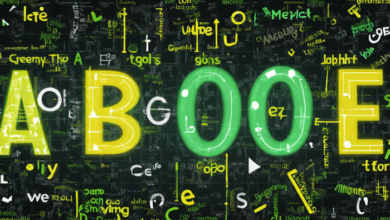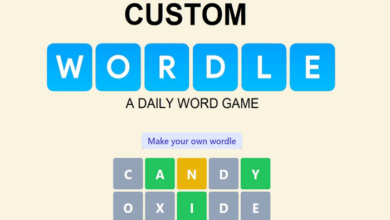Mastering Custom Wordles: Your Step-by-Step Guide

The popularity of the word puzzle game Wordle has inspired many enthusiasts to think about how to make a custom Wordle game. Customizing Wordle allows players to tailor the difficulty, themes, and even the rules to suit their preferences or educational needs. Whether you’re looking to create a custom Wordle for classroom activities, family game nights, or special occasions, understanding the basics of Wordle mechanics is your first step. This involves selecting a suitable word length and designing a user-friendly interface where players can enter their guesses and receive feedback.
Planning Your Custom Wordle Game
When you start planning how to make a custom Wordle, consider what you want to achieve with the game. Are you focusing on vocabulary building, or is it more for entertainment? This will guide your decisions on word choices and game complexity. For educational purposes, you might select terms that align with a certain study area. For personal entertainment, you might choose words that relate to a specific interest, like movies or sports. Plan how many attempts players will get, and what kind of hints might be useful, like the inclusion of synonyms or first letters.
Choosing the Right Technology for Your Custom Wordle
To make a custom Wordle, you’ll need to decide on the technology or platform you’ll use. If you have programming skills, you might opt for a more hands-on approach using HTML, CSS, and JavaScript to create an interactive experience. For those less tech-savvy, numerous online tools and templates allow for easy customization without writing code. Platforms like Python can also be used with libraries like Tkinter for GUI creation, making it relatively simple to build a basic Wordle game.
Designing the User Interface
The user interface is crucial when figuring out how to make a custom Wordle. The design should be clean and intuitive, ensuring that players understand how to submit guesses and view their results. Color-coding feedback, such as using green for correct letters in the correct position and yellow for correct letters in the wrong position, is essential. Additionally, consider the accessibility of your game — ensuring it’s usable for people with color vision deficiencies could involve using patterns or icons in addition to colors.
Developing the Word List
An integral part of how to make a custom Wordle is creating the word list that will be used in the game. This list should reflect the game’s theme and difficulty level. For educational Wordles, include words that challenge the user’s vocabulary but are still recognizable. For more casual settings, you might choose everyday words or words with a fun theme. Ensure the list is extensive enough to keep the game interesting over multiple plays but not so obscure as to frustrate players.
Programming the Game Logic
The game logic is what makes your custom Wordle function. It needs to check the player’s input against the correct answer and give appropriate feedback for each guess. This includes validating the length of the word, checking each letter’s position, and updating the display after each guess. If you’re coding the game yourself, you’ll need loops and conditions to analyze the input and compare it with the secret word effectively.
Testing and Debugging Your Game
Before launching your custom Wordle, thorough testing and debugging are essential. This phase helps you identify any glitches or user experience issues. Testing might involve friends or colleagues playing the game to provide feedback on its functionality and enjoyment. Debugging often requires tweaking the code to fix any logical errors or improve the interface based on test feedback.
Hosting Your Custom Wordle
Once your custom Wordle is ready and tested, you’ll need to consider how to host it online if you want to share it publicly. This could involve setting up a website or using platforms like GitHub Pages, which is particularly useful for those who coded their Wordle in JavaScript. Make sure the hosting service you choose can support the traffic you anticipate and provides a smooth user experience.
Marketing Your Custom Wordle
If you want your custom Wordle to reach a broader audience, think about how you can market it effectively. Sharing it on social media, word-of-mouth recommendations, and leveraging online communities interested in word games can increase visibility. If your Wordle has a unique theme or offers educational value, consider reaching out to educational blogs or websites that might feature your game.
Monetizing Your Custom Wordle
For those interested in how to make a custom Wordle and potentially profit from it, monetization strategies can be implemented. This could include in-app purchases for extra hints, advertisements, or a premium version with more features or words. Ensure that any monetization respects the user’s experience and provides genuine value.
Conclusion
Learning how to make a custom Wordle can be a fun and rewarding project. It allows creators to engage with the popular puzzle game format on a deeper level, tailoring the experience to specific audiences or personal interests. Whether you’re a programmer or not, various tools and platforms make the Wordle customization process accessible. With creativity and attention to detail, your custom Wordle can offer endless entertainment and education to players.
FAQs
- Do I need to be a programmer to make a custom Wordle?
- No, several platforms allow you to create custom Wordles without any programming knowledge. However, coding skills offer more flexibility in customization.
- What is the best platform for hosting a custom Wordle game?
- Platforms like GitHub Pages or personal websites work well for hosting interactive games like Wordle, depending on your audience size and server needs.
- Can I create a Wordle game for commercial purposes?
- Yes, you can monetize your custom Wordle through advertisements, in-game purchases, or a subscription model, provided it offers value to users.
- How do I ensure my custom Wordle is accessible to all players?
- Include accessibility features like color-blind modes, readable fonts, and keyboard navigability to make your Wordle accessible.
- What are the key considerations when choosing words for a custom Wordle?
- Consider the theme, difficulty level, and audience of your Wordle. Ensure the words are challenging yet solvable to maintain engagement.





